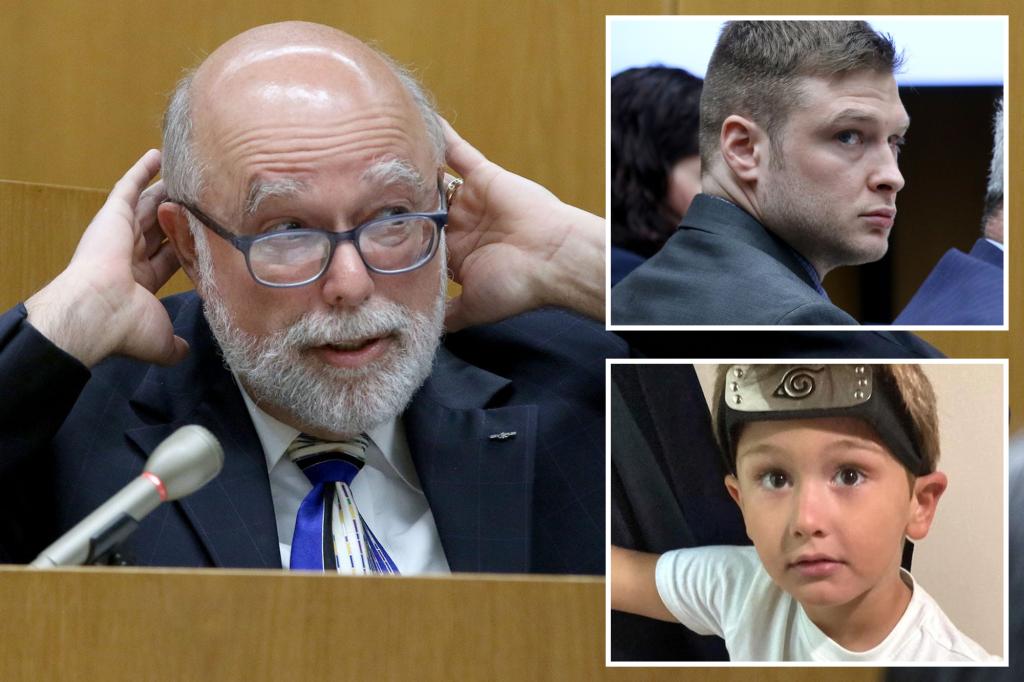During the murder trial of Christopher Gregor, a forensic pathologist testified that there was no evidence of sepsis on Gregor’s son, Corey Micciolo, who died under his care. Dr. Thomas A. Andrew detailed the bodily contusions suffered by the 6-year-old, including a laceration on the heart, contusions on the liver, and blunt force trauma to the chest. These injuries indicated that the boy had been murdered, contradicting Gregor’s claims that his son had died of sepsis possibly caused by pneumonia.
Prior to Corey’s death in 2021, Gregor was captured on camera forcing the boy to run on a high-speed treadmill until he was thrown from the machine. Gregor then made Corey get back on the treadmill, causing him to fall multiple times. The footage also showed Gregor biting the top of Corey’s head. Corey was later admitted to the hospital with symptoms like slurred speech, vomiting, trouble breathing, and nausea. Despite efforts to revive him, Corey’s heart stopped, and he passed away.
During the trial, it was revealed that Gregor left the hospital room while medical staff tried to save Corey’s life, leaving the boy to die without a family member present. The forensic pathologist initially thought the fatal injuries may have occurred while Corey was in his mother’s custody but later concluded that they happened while the boy was with his father. This determination was based on a video recording accidentally made by Corey’s mother that captured the child speaking normally while being dropped off at Gregor’s residence.
The video evidence played a crucial role in shifting suspicion toward Gregor as the responsible party for his son’s death. Dr. Andrews emphasized that a child would not be responding in a normal manner if they had already sustained fatal injuries. The nature and time of Corey’s death led investigators to believe that he suffered the fatal injuries while in Gregor’s care, challenging the defense’s claims about the cause of death. If found guilty, Gregor faces a potential sentence of 30 years to life for murdering his son.
Throughout the trial, witness testimonies and physical evidence painted a grim picture of the abuse and trauma Corey endured while under Gregor’s care. The pathologist’s detailed account of the boy’s injuries, combined with the disturbing footage of the treadmill incident, provided a clear narrative of the events leading up to Corey’s death. The trial highlighted the tragic consequences of child abuse and the importance of holding perpetrators accountable for their actions. As the proceedings unfolded, it became increasingly evident that Gregor’s actions had directly resulted in the untimely death of his young son.


